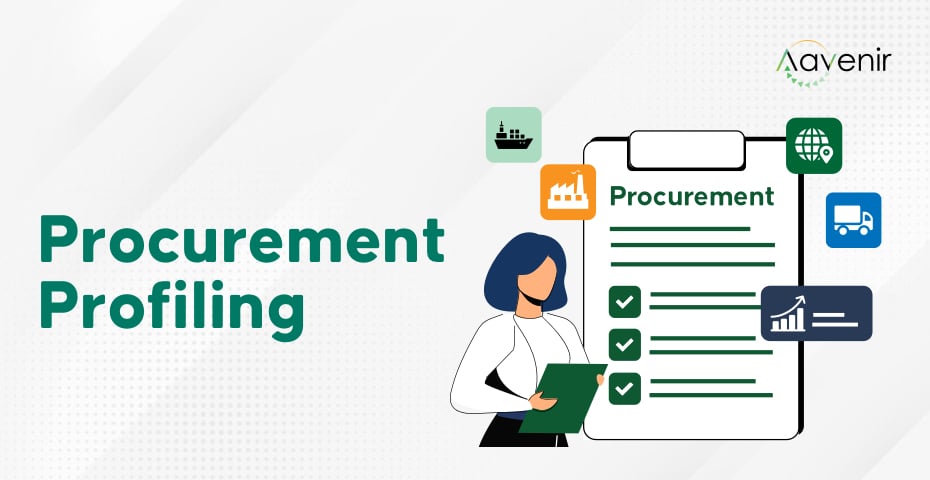What is Procurement Profiling?- Definition
Procurement profiling is the process of gathering and analyzing procurement spend data to identify purchasing trends and classify opportunities for enhanced purchasing.
The core elements of procurement profiling are:
- Visibility into procurement spend
- Analysis of procurement spend
- Improving procurement process based on spend data

Understanding procurement profiling
A correct and optimized procurement profiling will uncover answers to the critical questions such as What is being procured? Who is in charge of the procurement? Who are the vendors? What is the purpose of the procurement? How much is being spent? Are your vendors delivering as promised and negotiated in the vendor contract?
Once you know exactly where your money is going and how best your vendors are performing, you will be in a much better position to make procurement decisions. Procurement profiling can be made stronger by figuring out how and where it should be spent and identifying opportunities for reducing procurement costs. However, a problem that often arises while profiling is poor quality and lack of recorded data. This is where technology has an important role to play. Intelligent source-to-pay solutions can modernize overall procurement operations for greater compliance and control over costs.
Let’s deep dive into procurement profiling by going through each stage involved in the process:
Stage-1: Achieving visibility into procurement spend
Achieving spend visibility is more than tracking spend data because it provides a holistic and detailed view of how money moves through the organization. To do so, you need to get a comprehensive and well-organized system of records that tracks the history of each order from the time it is placed until the money is in the bank. It will allow you to see the accurate picture behind every transaction you make, which will aid in the detection of fraud or other bad behavior within your organization. To get started, build your baseline, recognize purchasing trends as well as product and service similarities.
Implement an automated source-to-pay solution to create and store purchase requisitions, purchase orders, goods receipts, and invoices, and you’ll be able to track everything from start to finish. Once you implement the source-to-settle solution, monitor it for compliance and address any issues as they arise.
Stage-2: Analyzing procurement spend
Analyzing each dollar spent behind your bulk procurement makes it easier to make informed decisions about what you should do next. You’ll have a solid answer about whether or not you can afford to invest more or not – which can make a difference to the company long after the procurement is made. A good procurement spend analysis program can encompass through:
- Spend analysis of categories
- Spend analysis of non-expert buyers
- Spend analysis of vendors
- Analysis of timing –when money is being spent and what are the payment terms
Stage-3: Improving process based on spend analytics
This is the crucial stage of procurement profiling. Cost reduction has always been a big priority for CFOs. Based on the spend analytics, they can optimize the areas that need attention and focus more on the activities which actually bring value to the organization. And that’s where spend analytics play an essential role by displaying analysis based on past factual data. Spend analytics dashboards help analyze spend with vendors by contract to identify spend leakage through non-compliant contracts, identify unrealized discounts through late payments of invoices, or opportunities to renegotiate better payment terms to capture unrealized interest. It reduces supplier risks, provides increased visibility on category sourcing patterns, and boosts source-to-pay efficiency.
When procurement profiling is done manually or with outdated tools, the spend data preparation process can take months, which restricts the frequency of use. However, with AI-driven source-to-pay solutions, the process can take weeks or even days and achieve more accurate richer results.

